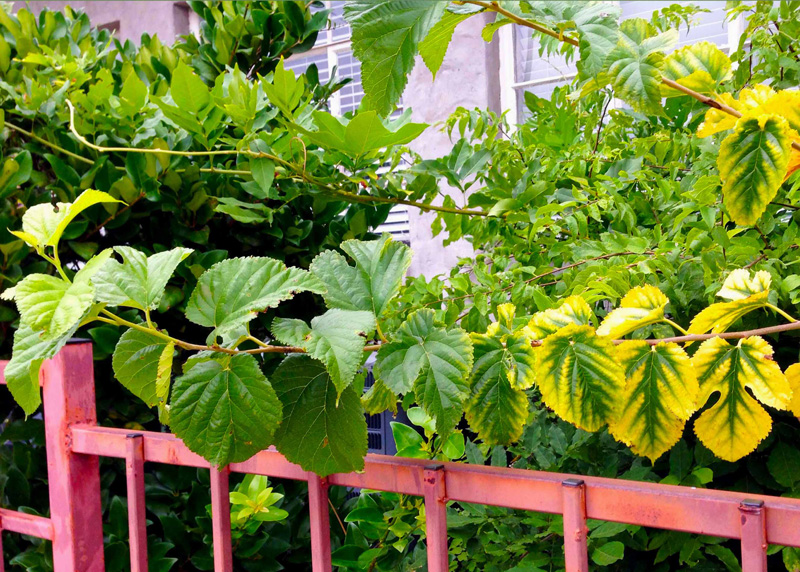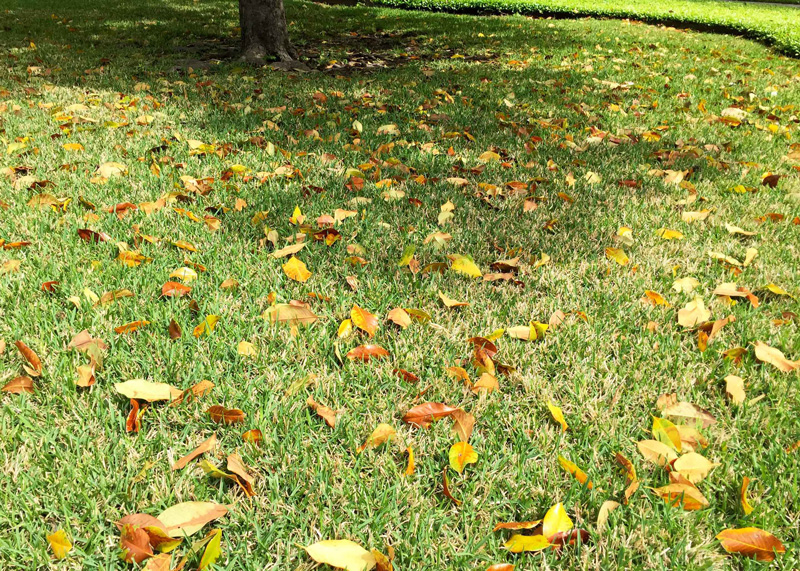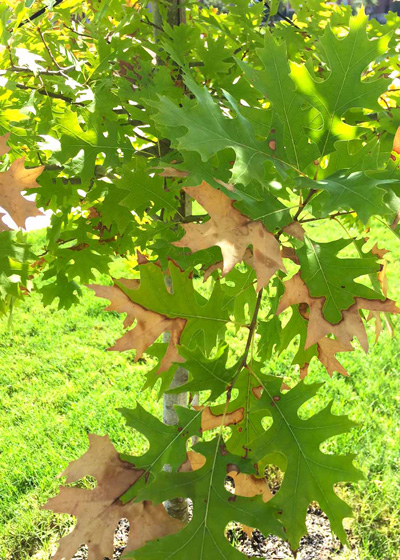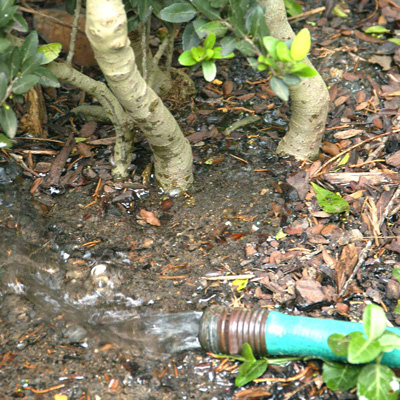Call After Call…
Last week seemed like the culmination of it all. The long, hot summer has taken its toll on the shade trees of Texas. They’re dropping their leaves as if it were autumn.
Every time my radio call screen refreshed I had at least one new caller asking about this tree or that dropping big numbers of leaves.
Here’s what I told them…
First of all, there’s no doubting that heat and drought have played a big part. But we gardeners can protect our trees if we try. That will be the focus of my story below.
It’s also possible that leftover freeze damage from way back in February 2021, cotton root rot, borers and other issues could have been responsible, but I’m going to go with what I’ve been seeing as I’ve been motoring around my part of Texas.

• To the folks with the large-leafed, fast-growing shade trees (fruitless mulberries, cottonwoods, silver maples, catalpas, etc.), I told them what they’re seeing is pretty much what they can expect every summer in Texas.
These trees produce quantities of those massive leaves in cool, moist Texas springs, and I guess their little brains assume that the weather’s always going to be just as great the rest of the season. Then, June arrives with the bad news. It turns hot and dry and the trees decide they have to get rid of some of that responsibility. They start shedding older leaves that came out first in the spring.
The solution (to a degree): soak them deeply. It won’t stop all the leaf drop, but it will slow it down so that the trees can live to leaf out another spring and go through the process again.

• To people with established shade trees of high quality, but also with mid-sized or large leaves (southern magnolias, Shumard red oaks, etc.), I warned them that they must have let those trees go too long without watering. Sadly, I’ve seen a fair amount of that around Texas. It’s a real shame when we let a quality shade tree be hurt or die because we failed to water it at least a couple of times in the summer.
Buy yourself a soaker hose. Lay it in a large arc around the drip line of the tree and let it run slowly for 12 hours. A few days later, reposition it several feet away from the first placement and soak the soil again. Repeat every couple of weeks in really hot weather.

• For new trees less than two years in their current locations, the problem is that they have probably gotten too dry one or more times over the course of the summer. They must be watered by hand (not by lawn sprinkler irrigation) in order to soak their soil balls completely. At 100F that needs to be done every couple of days. At 95F every third day. At 90F two times per week.
Use a garden hose and either a water bubbler or water breaker. Give each tree a quantity of water equal to the amount of soil in its original container. In other words, if it came out of a 20-gallon pot, it should be given 20 gallons of water at each of those waterings.

I build a shallow berm of soil to retain that water (instead of piling soil up around the trunk at the time of planting). And I do not suggest buying those expensive bags that wrap around the trunks of trees. The garden-hose/hand-watering technique is much less expensive and far more effective.
